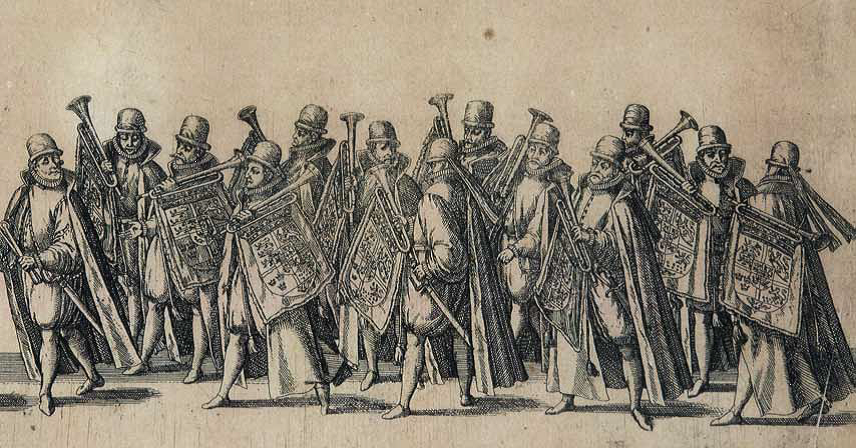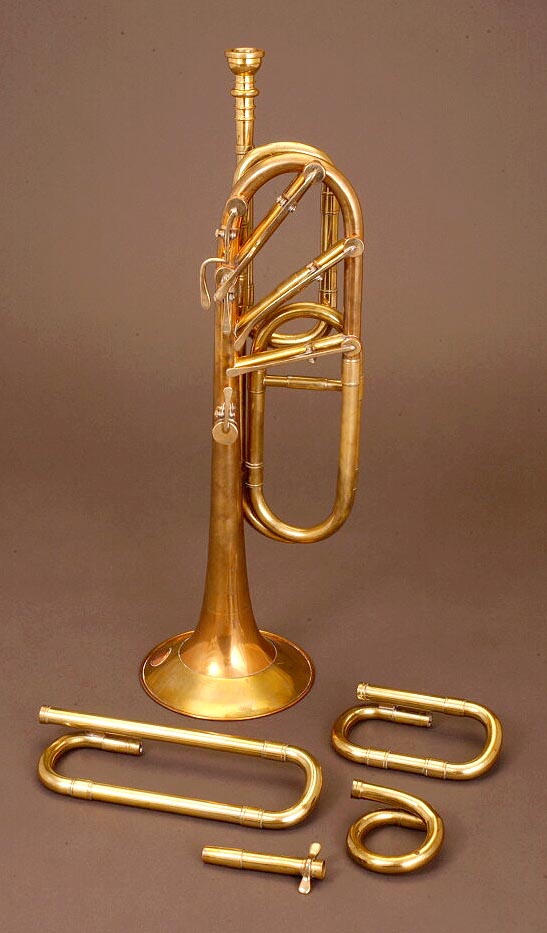DANISH MUSIC FOR BRASS
Is a series of recordings with brass players from the Royal Danish Orchestra
as chamber music players or soloists
EVERGREENS FOR TRUMPET
PLAYED BY KETIL CHRISTENSEN
ARRANGED BY MOGENS ANDRESEN
WITH ROYAL DANISH ORCHESTRA BRASS ENSEMBLE
AND MEMBERS OF THE ROYAL DANISH ORCHESTRA
CONDUCTED BY MARCUS LEHTINEN
THE ROYAL DANISH ORCHESTRA

The Royal Danish Orchestra’s emblem, the Royal Trumpeter Corps. Engraving from 1583. The Royal Danish Orchestra is the the world’s oldest orchestral institution. It started out 1448 as a trumpeter corps, and today it is an opera and symphony orchestra based at the Royal Opera in Copenhagen.


KETIL CHRISTENSEN
KETIL CHRISTENSEN studied at The Royal Danish Academy of Music with Kurt Petersen and became only 19 years old principal trumpet in The Royal Danish Orchestra. Co-founder of The Royal danish Orchestra Brass Ensemble and member of the chamber orchestra Collegium Musicum, Copenhagen. Has made many recordings and engagements as soloist. in 1980 he won a prize at the international competition for soloists in Munich and has later been a member of the jury at the same competition in 2018. Has been teaching trumpet at The royal Danish Academy of Music. The recipient of the Gade Scholarship and Gladsaxe Music Award.

MOGENS ANDRESEN
After working with the Falster Infantry Regimental Band in Vordingborg and the Malmö Symphony Orchestra, in 1974 Mogens Andresen became a bass trombonist in the Royal Danish Orchestra. In 1988-2013 Mogens Andresen was appointed professor at the Royal Danish Academy of Music in Copenhagen and head off brass. Mogens Andresen was a co-founder of a brass ensemble from The Royal Danish Orchestra and plays Baroque trombone in Den Danske Violonbande. With these ensembles he has made many recordings and has toured in Europe and USA. The recipient of the “Neil Humfield award in 2016 for Excellence in Trombone Teaching” from “International Trombone Association”. Writer of the book ROYAL DANISH ORCHESTRA The World’s Oldest Orchestral Institution. Composer and arranger of music for brass published on BRASSMUSICONLINE.DK. His compositions and arrangements are performed worldwide, among others: The Brass Ensemble of the Concertgebow Orchestra, German Brass, Brass Enslemble of the Berlin Philharmonic, The Danish trombone Quartet, the Danish Brass Quintet ect.

ROYAL DANISH ORCHESTRA BRASS ENSEMBLE
Bjarne Nielsen, Ketil Christensen, Søren Emtoft – trumpet / Henning Hansen – horn / Thorbjörn Kroon – alto trombone / Keld jørgensen – tenor trombone / Mogens Andresen – bass trombone & euphonium / Jørgen Arnsted & Asger Fredericia – tuba / Søren Monrad & Ole Pedersen – percussion

MARKUS LEHTINEN
Markus Lehtinen’s conducting career took off on jointly winning the Nordic conducting competition in 1987, after which he was soon engaged as conductor to the Copenhagen Royal Opera from 1988-1993, and since 1992 he has also been a regular visitor to the Stockholm Royal Opera, while taking part in several foreign tours, such as to Athens, the USA and the Czech Republic. Markus Lehtinen has twice been engaged by the Finnish National Opera: from 1985-88 and 1992-97, since which time he has been guest conductor. During 1999-2002, Markus Lehtinen was chief conductor of Jyväskylä Sinfonia and chief guest conductor of the Malmö Symphony Orchestra. Since autumn 2004, Markus Lehtinen has been Professor of the Opera Department of the Sibelius Academy, and he was also the artistic director of the Academy’s first Winter Festival,. Also several master-classes in conducting in Scandinavian countries, January 2010 Lehtinen was teacher for American Conductors Guild Conference in Copenhagen.

TILMANN SUSATO: PAVANE
JOHANN SEBASTIAN BACH: JESUS BLEIBET MEINE FREUDE
GLORIA IN EXELSCIS DEO -ANONYMOUS

My Lady Greensleeves by Dante Gabriel Rossetti
GREENSLEEVES – ANONYMOUS

HAROLD ARLEN: OVER THE RAINBOW

HENRY MANCINI: THE PINK PANTHER THEME

IN THE DEEP STILLNESS OF THE FOREST – TRAD.

JOHANN SEBASTIAN BACH’s STAR-TRUMPETER GOTTFRIED REICHE (1667 – 1734)
Engraving (1727 ) after a painting by Gottlob Haussman.
Mogens Andresen
THE TRUMPET AS A MELODIC SOLO-INSTRUMENT
The trumpet has always been perceived as a messenger and a signal instrument as it is heard at the beginning of John Sebastian Bach’s Christmas Oratorium:

TRUMPET PARTS FROM THE START OF THE CHRISTMAS ORATORIO BY J.S. BACH.
In the Baroque period one could only play the so-called natural tones, but in the high register where the tones are close, one could play soft and melodic, It was called CLARIN-PLAYING, and the famous trumpeters of the baroque area was known not only for their dramatic fanfare-playing but also for their ability to play softly in a singing vocal style.

THE ENGLISH TRUMPETER VALENTINE SNOW (1700-1770),
“THE FINEST TRUMPETER IN ENGLAND AND AMONG THE BEST IN EUROPE”,
KEYED TRUMPET

Around 1775 new attempts came up to build trumpets with holes, just like earlier in the renaissance when the Cornett ( the zink ) appeared, though this time with a key system to close the holes (like woodwind instruments). It was the Viennese court trumpeter Anton Weidinger (1767-1852) who developed a trumpet with 5 keys. He did not invent it, as some have believed, but developed his own instrument (Klappentrompete) that could play chromatically based on earlier examples of keyed trumpets. Joseph Haydn (1732 – 1809) and Nepomuk Hummel (1778 – 1837) wrote their concertos for him and now thrills, chromatic runs and diatonic melodies replaced the standard fanfare motifs. 

ANTON WEIDINGER (1767-1852)

When the valve system was invented in 1815, the trumpet – and even more its cousin the cornet – became full chromatic. It was used in both military bands and in all kind of entertainment music.


Bb-CORNET WITH 2 VALVES MADE BY CURTOIS FRANKRIG 1833. Metropolitan Museum New York


“BOURGEOIS PARTY” Lithography by H. Dumier, 1852


TRUMPET in G WITH BERLINER-PUMPEN, MARKNEUNKIRCHEN, GERMANY ca. 1860
But composers also wrote for the instruments classical music. Giuseppe Verdi (1813 – 1901) has written melodically for the cornet in the opera don Carlos (1867), Tchaikovsky (1840 – 1893) in the ballets The Swan Lake (1876) and The Nutcracker (1892) and Wagner (1813 – 1883) for the trumpet in the opera Parsifal (1882).

JEAN BAPTISTE ARBAN(1825-1889)
– the first big virtuoso on the cornet
When the cornet arrived, there was a lot of discussion about if the cornet or the trumpet was the best instrument. The first cornets had a much softer sound than the cornets of today, so the difference between the cornet and the brilliant trumpet was quite big. Arban was a of cause a unconditional defender of the cornet in hopes of making it as popular as a solo instrument as the flute or the violin.
The great popular breakthrough for the trumpet and the cornet as melody instruments and solo instruments came with the wind band movement. The cornet became the leading solo instrument in melodic beauties and in virtuoso variations of known melodies. John Philip Sousa (1854 – 1932) had one of the most famous wind bands ever and he managed to have 3 of his time’s leading virtuoso cornet players in the band:

HERMANN BELLSTEDT (1858-1926 ), DEL STAIGERS (1919-1950, HERBERT CLARKE (1867-1945)
Since then, the trumpet with its powerful and lyrical voice has been melody carrier in all kinds of music. And if there has been a shortage of it, new trumpet players have always come on track. Trumpet has been dominant in TV-film music, just think of it: Star Wars, Indiana Jones, Superman, Dynasty etc.In an interview in 1957, Eddie Calvert was asked how the “melodic” playing has caught on ? He answered: “I just happened to come along at a time when there was no one else playing melody line and recorded O, Mein Papa – It’s as simple as that.”

“EDDIE” CALVERT (1922 – 1978), ENGLAND, was launched as “THE MAN WITH THE GOLDEN TRUMPET”. He succeeded with a melodic repertoire played with a big warm sound and a “Mexican” vibrato. His best-selling hits “worldwide” were: “Oh Mein Papa” and “Cherry Pink and Apple Blossom White”.







